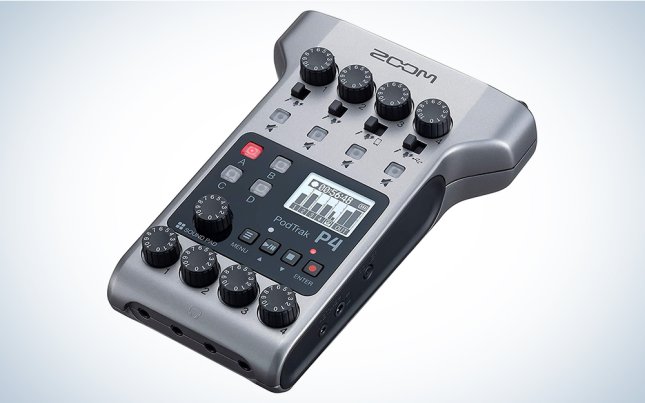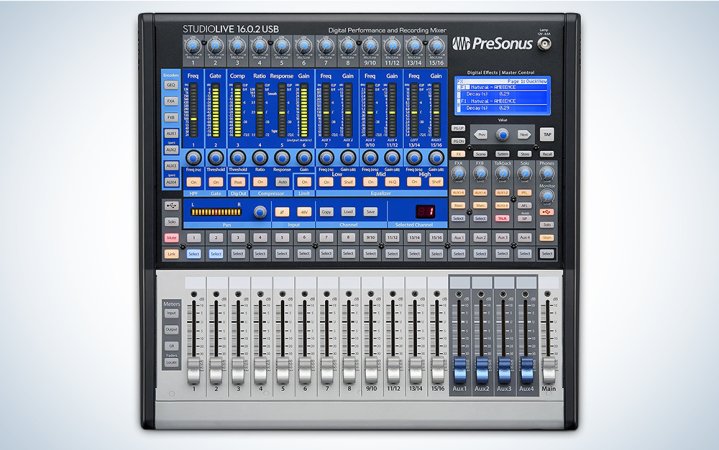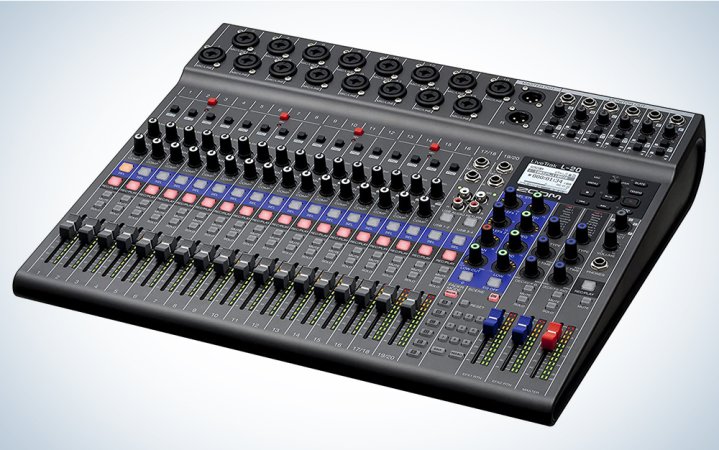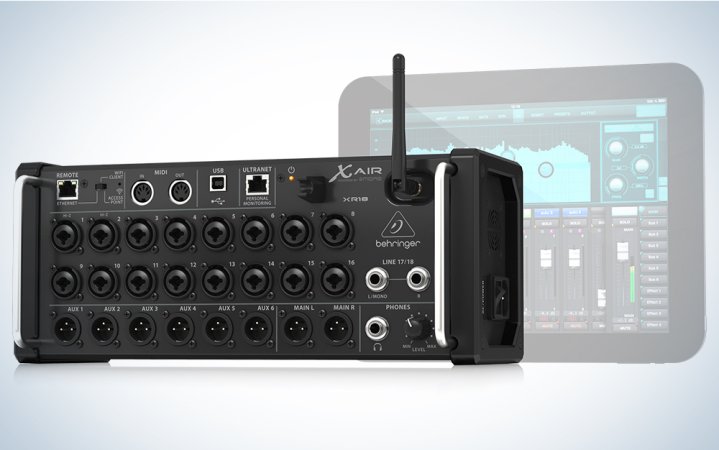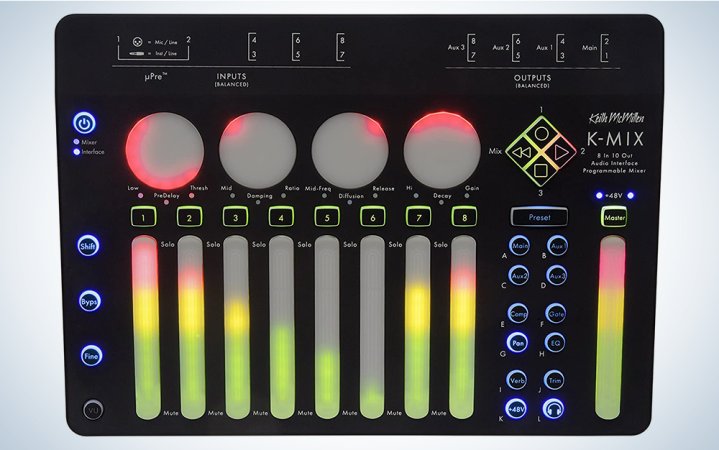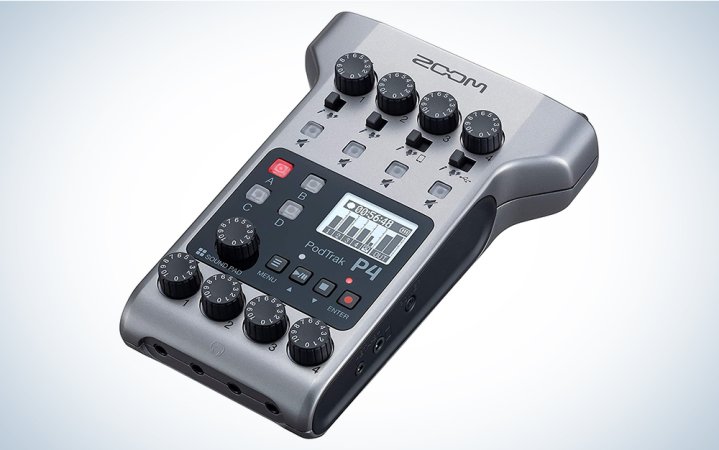We may earn revenue from the products available on this page and participate in affiliate programs. Learn more ›
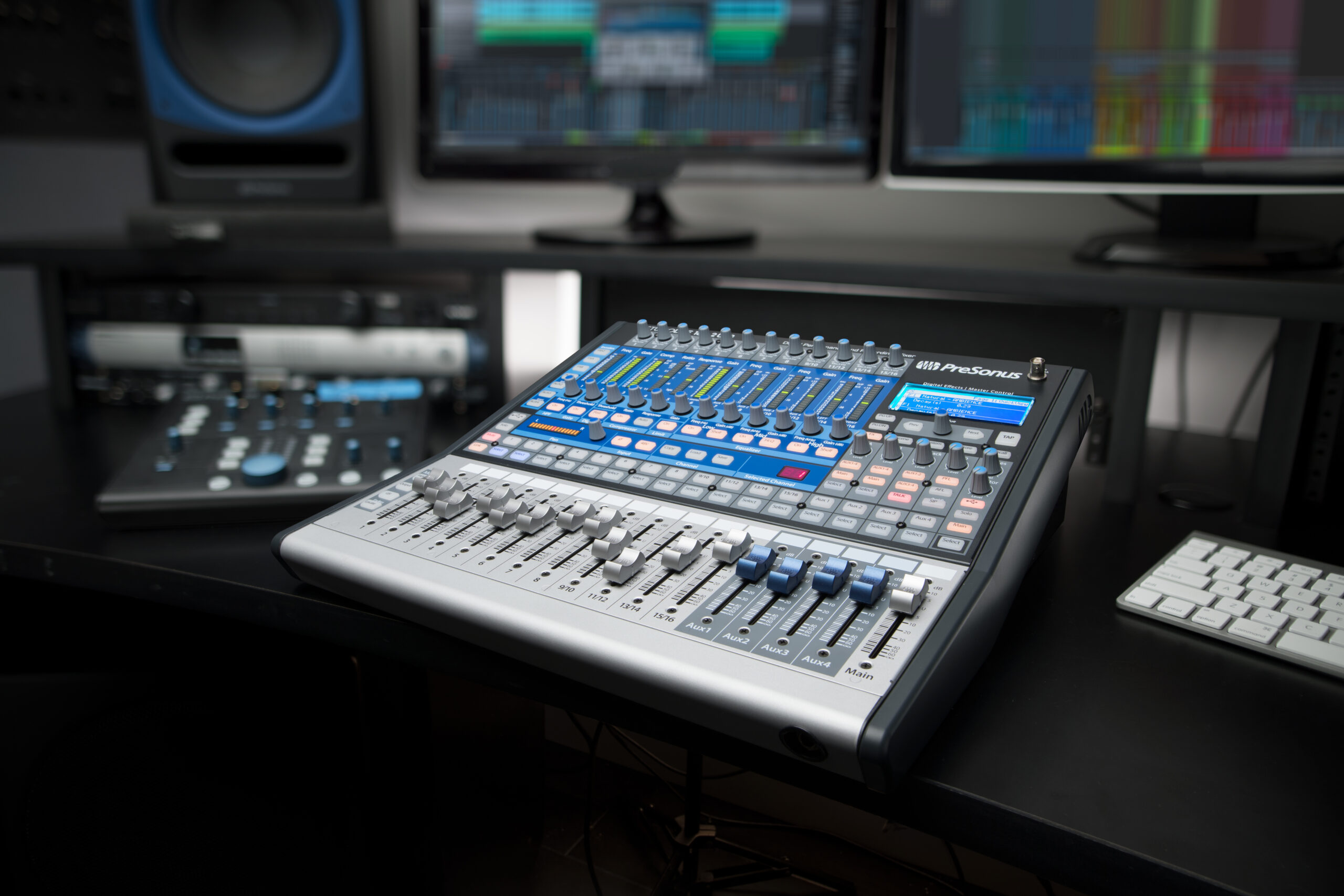
Digital mixers offer several intriguing advantages over their analog counterparts. They tend to be more compact and thus easier to transport. They can process instruments and voices with a range of built-in effects that would require a rack full of gear in the analog domain. They give you powerful convenience features you can’t get on an old-school mixing board, such as saving and recalling settings and control via remote app. They can connect to your computer and serve as audio interfaces, letting you send audio back and forth between the mixer and your digital audio workstation, or DAW. Whether you’re doing live mixing, studio recording, podcast production, or all of the above, even a budget digital mixer can add convenience and productivity to your workflow. Here are our picks for the best digital mixers that can help you keep your bank account and signal chain happy.
- Best overall: PreSonus StudioLIve 16.0.2 USB
- Best for live recording: Zoom LiveTrak L-20
- Best for tone bending: Behringer X AIR XR18
- Best for versatility: Keith McMillen K-Mix
- Best portable: Zoom PodTrak P4
How we chose the best digital mixers
When choosing the digital mixers for this roundup, we applied a specific set of criteria. First, the unit had to be affordable. We chose products that ranged from a little more than $200 to just over $1,000. The hardware also had to function as both a mixer and an audio interface, making it usable both for studio and stage. And while some of the mixers we chose also offer onboard recording, we looked at that as a bonus rather than a requirement. Mixing user impressions and first-hand experience, we summed our research and selected five digital mixers that deliver in the price-for-performance category.
The best digital mixers: Reviews & Recommendations
Whether in your home studio or at a live performance, digital mixers can add considerable power and convenience to your musical life. The following are our picks for the best digital mixers to upgrade your studio affordably.
Best overall: PreSonus StudioLive 16.0.2 USB
Front(end) and Center
Why it made the cut: An intelligently designed product that gives you the mixing and processing tools you need for live sound, live recording, and studio recording.
Specs
- Dimensions and Weight: 16(W) x 15.56(D) x 5.5(H) inches, 16 pounds
- Mixer Channels: 16 in, 16 out
- Audio Interface Channels: 18 in, 16 out
- Audio Interface Resolution: Up to 24-bit/48kHz
- Built-in Effects: Dynamics and EQ per channel, reverb and delay send effects, 31-band graphic EQ
Pros
- Comprehensive feature set for studio production, live performance, and recording
- Fat Channel feature makes channel adjustments and processing easy
- Comes with a large software bundle
Cons
- More expensive than others
- User interface might be intimidating
- At 16 pounds, it’s on the heavier side
PreSonus has years of experience making digital mixers, and it shows in this versatile product with a generous array of XLR and 1/4-inch inputs and outputs. Perhaps its most impressive feature is the “Fat Channel,” which lets you select any input channel at the push of a button, and instantly that channel’s key parameters show upfront and center in a large and intuitive display with physical knobs. The 16.0.2 USB sports two master effects processors, which provide adjustable reverb and delay effects accessible from a pair of effects sends per channel (allowing you to route audio from a channel to the master effects). You can use the mixer’s four aux sends to create monitor mixes for onstage or in-studio talent. Its 16×16 USB 2.0 audio interface gives you plenty of mic and other inputs when recording in your DAW. Also, you get an extensive software bundle with the 16.0.2 USB. The UC Surface application gives you remote control from a laptop or tablet. Studio One 5 Artist is a version of PreSonus’s DAW for Mac and Windows and offers unique integration with StudioLive mixers. You also get Capture, a computer program that makes it easy to record each mixer channel to a separate track when connected to the StudioLive. Finally, you get the Studio Magic software bundle for your computer, which features Ableton Live Lite and production plug-ins from Brainworx, iZotope, Arturia, and others. All this combines to make the PreSonus the studio mixer to beat.
Best for live recording: Zoom LiveTrak L-20
The Beats to Beat
Why it made the cut: The LiveTrak L-20 offers many well-thought-out features, particularly for live recording and live performance.
Specs
- Dimensions and Weight: 17.5(W) x 15.3(D) x 3.3(H) inches, 16 pounds
- Mixer Channels: 20 in, 8 out
- Audio Interface Channels: 22 in, 4 out
- Audio Interface Resolution: Up to 24-bit/96kHz
- Built-in Effects: 3-band EQ and compressor per channel, reverb and delay send effects
Pros
- Built-in 22 track SD card recorder
- Create up to six monitor mixes
- Class-compliant mode for iOS devices
Cons
- Only has four outputs
- Wireless adapter necessary to use remote app
- No control app for Android tablets
With its ability to function as a live console, an audio interface, and an internal SD card recorder, the Zoom LiveTrak L-20 is a triple threat. The largest of the LiveTrak line (Zoom also makes L-12 and L-8 versions) has enough inputs—16 mic/line and two pairs of stereo line—to be the front end of a band’s PA system. Effects-wise, each input channel has 3-band EQ and a one-knob compressor. Zoom equipped the master bus with reverb and delay, which you can access from a pair of effects sends per channel. The unit features six aux outputs that you can use as monitor sends for wedges, headphone amps, and in-ear monitor systems. With its built-in 22-track SD recorder (card sold separately), you can record shows at up to 24-bit/96kHz quality. It also functions as a 22×4 USB interface, allowing you to use the LiveTrak L-20 for band-sized sessions in your home studio. If you want to record to an iOS-based DAW, the L-20 has a convenient Class-Compliant switch, so you won’t need an adapter when plugging in an iPhone/iPad. But if you’re going to use L-20 Control, Zoom’s remote-control iPad app, you’ll need to purchase a BTA-1 or other compatible wireless adapter. Zoom also makes the L-20R, a less-expensive, rack-mountable version with fewer physical controls, designed solely for remote-control use.
Best for tone bending: Behringer X AIR XR18
The Benefits Rack Up
Why it made the cut: An extensive feature set and a surpassingly low price.
Specs
- Dimensions and Weight: 16.1(W) x 14.1(D) x 4.3(H) inches, 8.8 pounds
- Mixer Channels: 20 in, 10 out
- Audio Interface Channels: 18 in, 18 out
- Audio Interface Resolution: Up to 24-bit/96kHz
- Built-in Effects: Per-channel EQ, compressor, gate; 4 addressable effects busses with numerous effects and processing choices (insert or send) and master EQ
Pros
- Excellent value
- Large collection of effects
- Comprehensive feature set
Cons
- No standalone operation—requires a computer or tablet
The XR18 is a rackmount unit (which you can also place on a tabletop) that has no onboard controls. You make all your adjustments on a tablet (iOS/Android) or computer (Mac/Windows/Linux) using Behringer’s free X AIR control software. The mixer creates a Wi-Fi network that you can access from a mobile device or laptop. Alternatively, you can connect your computer to the XR18 with an Ethernet cable. In a live-mixing situation, you don’t need a snake (a single, hefty cable with numerous inputs/outputs at its ends). You can place the XR18 onstage while you mix from other parts of the room. Its 16 mic preamps and its instrument and line inputs are enough to fully mic up most bands. Not only does the mixer offer per-channel dynamics and EQ, but it also has four master effects processors that you can access with any one of the four effects sends per channel. The X AIR app provides an impressive range of effects, including reverbs, delays, compressors, EQs, modulation, overdrive, and even includes emulations of some classic processors. The XR18 also makes a powerful audio interface, with 18 in and 18 out over USB to your DAW. If you don’t mind the lack of physical controls, the X AIR XR18 offers a lot of mixing power for the money.
Best for versatility: Keith McMillen K-Mix
You CAN Take It With You
Why it made the cut: Its vibrant design, amazingly compact size, and reasonable price make this an intriguing and highly portable option.
Specs
- Dimensions and Weight: 9.3(W) x 6.4(D) x 1.6(H) inches, 3.7 pounds
- Mixer Channels: 8 in, 10 out
- Audio Interface Channels: 8 in, 10 out
- Audio Interface Resolution: Up to 24-bit/96kHz
- Built-in Effects: Dynamics and 3-band semi-parametric EQ per channel, master reverb
Pros
- USB bus powered
- Compact and durable; no moving parts
- Mixer, interface, and MIDI control surface
Cons
- Only two mic inputs
- 3.5mm (1/8-inch) headphone jack rather than 1/4-inch
- Remote control software not available for mobile
Your first look at K-Mix may be a double-take. Instead of faders, it sports backlit touch strips that, depending on the mode you set, function as channel faders or level controls for aux sends, input trims, and reverb sends. The lights you see through the translucent faders show their positions or function as VU meters. Instead of knobs, you get four “Rotaries,” which are round, multifunction controllers for panning (K-Mix even supports surround panning) and adjusting the parameters of the channel-based dynamics processors, 3-band EQ, and master reverb. K-Mix is remarkably compact and can fit in a backpack or laptop bag. It’s also bus-powered over USB from your laptop or mobile device. But don’t let its diminutive size fool you. K-Mix is impressively versatile. It can function as a standalone mixer, albeit with only two mic inputs and six line inputs, a USB audio interface, and a MIDI control surface with transport controls for your DAW. The free K-Mix Editor software (Mac/PC) gives you visual control of every function. You can even switch the line inputs to phono level in the software so DJs can plug in their turntables. And, if you’re a livestreamer with a battlestation that stands out thanks to highly visible RGB-equipped gear, the K-MIX will add even more distinctive flair to your lair.
Best portable: Zoom PodTrak P4
Capture a FirstHAND Experience
Why it made the cut: The PodTrak P4 is a comprehensive, easy-to-use podcast production studio that you can hold in your hand.
Specs
- Dimensions and Weight: 4.4(W) x 6.1(D) x 1.9(H) inches, 0.64 pounds
- Mixer Channels: 4 in, 2 out
- Audio Interface Channels: 2 in, 2 out
- Audio Interface Resolution: Up to 16-bit/44.1kHz
- Built-in Effects: Limiter, low-cut filter
Pros
- Record your podcast to SD card
- Sound pads for triggering music, ads, and sound effects
- Record phone calls from mobile devices via an 1/8-inch TRRS input
Cons
- Only records at 16-bit/44.1kHz quality
- Outer body made of plastic
- Interface only has two inputs
If you want to produce a podcast and don’t have much audio production experience or studio gear, you might find the P4 to be a revelation. This small mixer sports four XLR mic inputs, with gain knobs and switchable phantom power, within a portable plastic housing. The mic preamps offer a whopping 70dB of gain, so you can boost the signal to capture something no matter how soft the source. Each channel features digital processing, including a limiter to quash overloads and a low-cut filter to reduce low-frequency background noise. The P4 also includes 4 headphone outputs with independent volume controls. If you want to create a multi-person podcast, just gather around the coffee table, add one of the best podcast microphones and some headphones, and off you go. Remote interviews are a huge part of many podcasts and the P4 offers a 1/8-inch TRRS jack that lets you plug any device with a standard headphone jack to record an interview, whether it’s on the street or on a screen from Zoom or another online source. To prevent those strange-sounding delays you sometimes hear on such interviews, the unit has a Mix-Minus feature, switchable on any channel, which mutes the sound of the interviewee’s voice from being sent back to them. Record your podcast to an onboard SD card and then transfer the individual files—including a stereo mix of the whole podcast, with dedicated tracks for the sound pads—to your computer for editing in your favorite podcast software. Or use the built-in audio interface to send a stereo mix to your computer for livestreaming.
What to consider when shopping for the best digital mixers
Ask yourself what you’re mainly going to use your mixer for. Will it be in a studio setting, such as for music or podcast production? Or will you be mixing and possibly recording live performances? Or perhaps you’re hoping to do it all. Does the mixer have enough microphone, line, and instrument inputs to cover your expected needs with a few in reserve? Does the mixer offer enough auxiliary outputs, in addition to the main stereo pair, to feed your monitors or headphone amp if you’re sending more than one mix to guests and performers?
Would you like the potential to make live recordings while using it for sound reinforcement? If so, you might want a mixer that has an onboard recorder. Alternatively, this gear functions as a USB mixer allowing you to record to an attached laptop. Either way, you want to be able to record the individual instruments and voices onto separate tracks that you can edit and mix later in your DAW of choice.
Are digital mixers harder to use than analog ones?
Admittedly, getting up to speed with a digital mixer can be more time-consuming than with an analog one. Although they’re usually pretty similar in their basic setup, with channel strips for the individual channels and a master section on the right side, digital mixers are often less intuitive. Memorizing what the various controls do can be more difficult because, unlike on an analog mixing console, many of the controls serve multiple functions based on different modes or pressing modifier buttons.
With any digital mixer, you should anticipate that it will take you some time to master its operations completely. But if you already know how to get around on an analog mixer, you’ll probably be up and running on the essential functions relatively quickly. How easy it is to learn depends a great deal on how well the user interface is designed.
What you don’t want with a mixer, particularly if you’re using it for live sound, is to have to step through a bunch of menus to find a particular function. You want to be able to respond to problems and access specific channel functions quickly when you’re mixing. It’s a challenge for digital mixer designers because they have a limited amount of controls and massive feature sets.
One of the more impressive bits of design from the units in this roundup is the Fat Channel feature on the PreSonus StudioLive 16.0.2 USB. With a single button push, you can call up any channel, and its essential functions are front and center with physical knobs to adjust them.
Can I replace my audio interface with a digital mixer?
Absolutely. An audio interface provides several vital functions: It gives you mic, line, and instrument inputs that feed analog-to-digital converters and then send the digital data to your computer-based DAW. When your DAW’s digital data comes back into the mixer, it converts it from digital to analog so that you can hear it through your monitoring means of choice. And it must provide a way for you to monitor without perceptible latency (the delay that occurs between what you’re playing or singing and when the audio comes back from your DAW) when you’re recording.
A digital mixer can do all that and often more and could be a powerful hub for a home studio. For one thing, you’ll probably get more inputs on a mixer than on a lot of interfaces. That means you can record more simultaneous sources, whether they’re instruments, voices, or both. And unlike on most standalone interfaces, you can EQ and even compress your sources during recording, if needed. The mixer will let you easily combine your live input signal(s) with anything coming back from your DAW without perceptible latency because you can blend the input signal and the return signal in your monitor mix. And for those who don’t like mixing with virtual faders and knobs, a digital mixer gives you tactile controls.
What’s the advantage of controlling a digital mixer with a remote-control app?
For live sound, remote control is massively helpful. When mixing a show, you can adjust the channels from a tablet or a small laptop as you walk around the venue. That allows you to check how it sounds in various spots around the room. Remote control is less critical in the studio. Still, if you’re doing double duty as engineer and musician or singer, you might find it handy to control the transport from your recording position. Otherwise, you might have to walk back to the mixer, hit record, and run back to your instrument or mic…making for a lot of dead air to edit out. Fortunately, many digital mixers offer remote control options. One of the units we’re recommending, the Behringer X AIR XR18, is controlled that way exclusively.
Do digital mixers sound harsh compared to analog ones?
Nowadays, the choice between analog and digital audio is more subjective than objective. In the early days of digital audio, in the 1980s when CDs first hit the market, many people thought digital audio sounded harsh or lacked “warmth” compared to vinyl. But a lot has changed since then. Analog-to-digital and digital-to-analog converter technology has improved significantly. Also, most digital audio production is at 24-bit resolution, which significantly improves quality and reduces harshness (the CD was and still is 16-bit). And if you’ve spent the money on a nice condenser microphone, for example, you want to capture the most nuanced sound waves possible.
One big difference that remains is that if you overload analog circuitry, you typically get pleasant-sounding saturation. On digital gear, overloads cause harsh-sounding distortion. But as long as you keep your levels under control, digital audio is cleaner than analog and less noisy.
FAQs
You don’t necessarily need a mixer for your home studio. But you might want one if you plan to record bands or ensembles that require multiple inputs. Most audio interfaces have anywhere from two to eight inputs, and if they offer expansion, you have to buy a second device. In contrast, you can get mixers that provide 12, 16, 20, 24, and more inputs. A mixer will also likely give you better facilities for setting up headphone mixes and let you EQ and compress on input, which most audio interfaces don’t offer.
Answering whether digital mixers are better than analog depends on how you define “better.” Some people like the sound and relative simplicity of analog mixers. But, in many cases, you can get more for your money with a digital mixer because digital processing gives you increased capabilities and flexibility. What’s more, there are many features on digital mixers that are impossible to implement with analog circuitry. Some examples include saving all the settings from a processor or the entire state of the mixer for later recall or controlling the mixer with a remote app.
Which sound mixer is the best depends on your needs and your taste. Of the mixers covered in this article, the Behringer X AIR XR18, PreSonus StudioLive 16.0.2 USB, and Zoom LiveTrak L-20 are the best if you’re mixing and recording bands or ensembles. They give you plentiful I/O, an excellent selection of effects. The PreSonus and the Behringer have robust interface features. If you’re planning to record your band onstage, the L-20’s onboard SD recorder might win you over. But if tight integration with a DAW, a professional feature set, and a lot of included computer software are important to you, look to the StudioLive. If portability, durability, and bus-powered operation are your primary needs, the K–Mix is the answer. And if you want to produce podcasts on a budget, the PodTrak P4 is an attractive option.
Final thoughts on selecting the best digital mixers
- Best overall: PreSonus StudioLIve 16.0.2 USB
- Best for live recording: Zoom LiveTrak L-20
- Best for tone bending: Behringer X AIR XR18
- Best for versatility: Keith McMillen K-Mix
- Best portable: Zoom PodTrak P4
Digital mixers are incredibly useful tools for mixing of all types. Whether you’re using one as an audio interface in a home studio or mixing your band live, the best digital mixers can make your musical life more convenient, productive, and fun.


